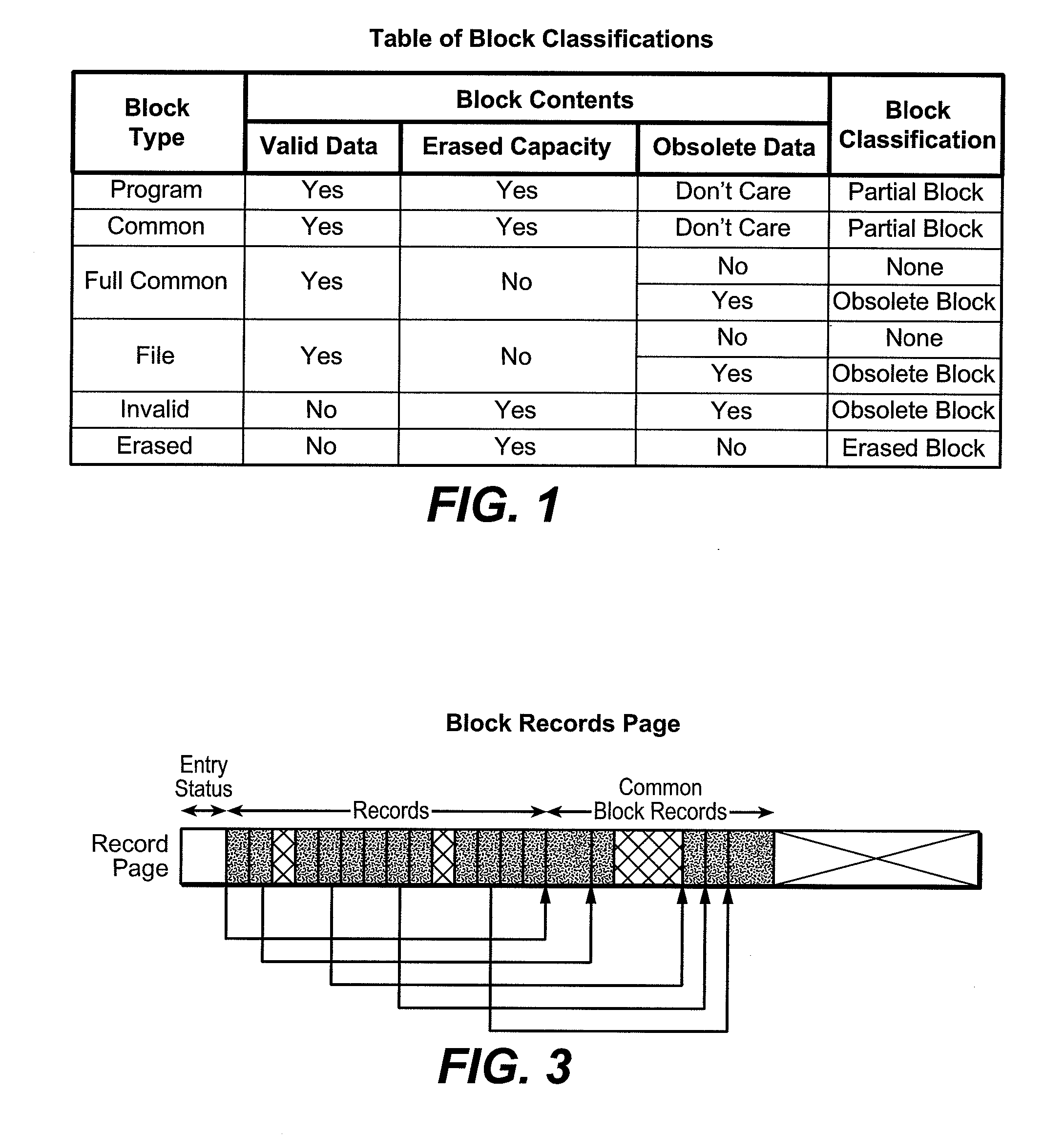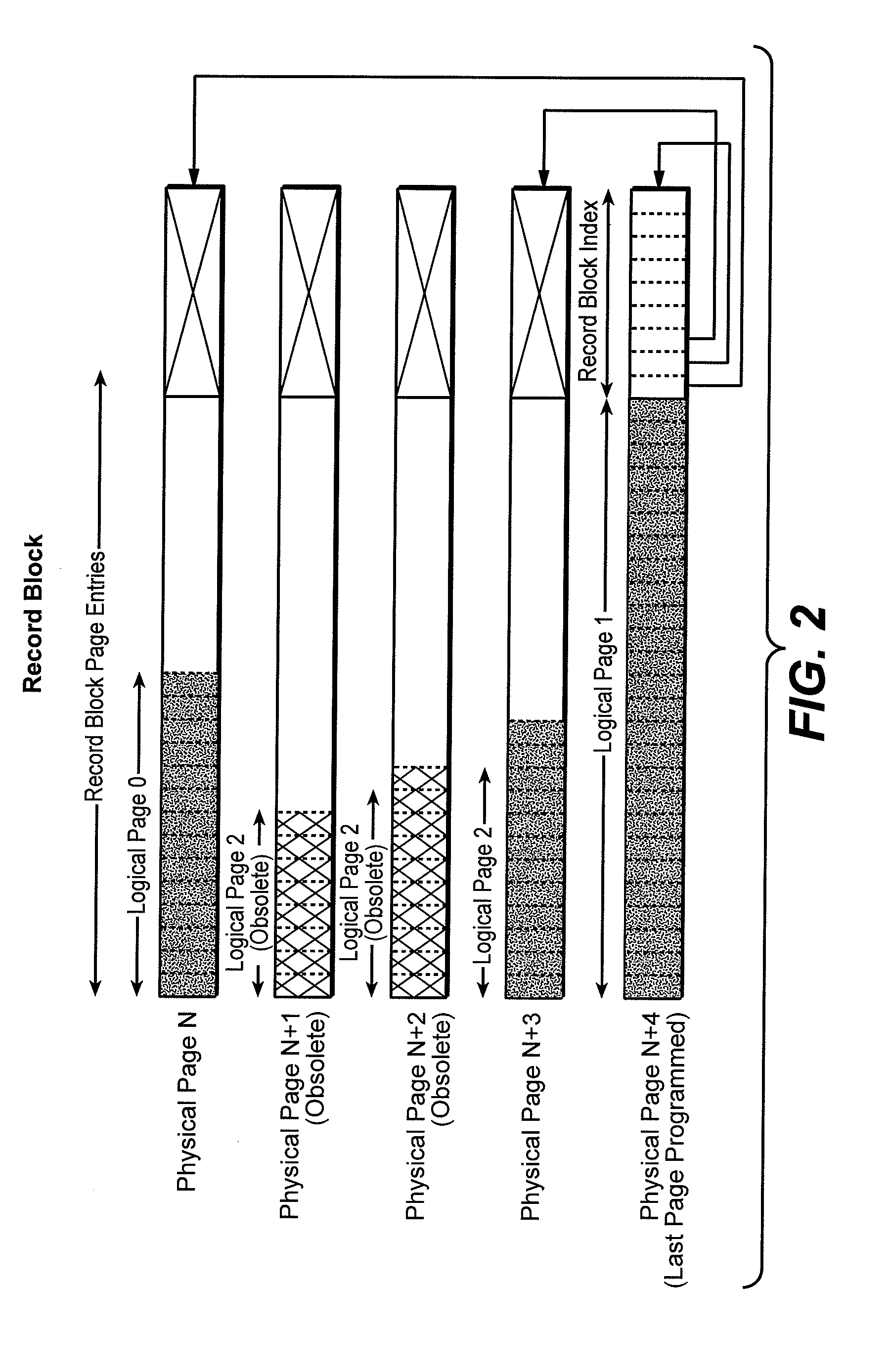Methods of Managing Blocks in NonVolatile Memory
a nonvolatile memory and block management technology, applied in the field of reprogrammable nonvolatile memory systems, can solve problems such as difficulties in efficiently operating them, and achieve the effect of reducing copying of valid data and efficient memory managemen
- Summary
- Abstract
- Description
- Claims
- Application Information
AI Technical Summary
Benefits of technology
Problems solved by technology
Method used
Image
Examples
first example
DETAILED FIRST EXAMPLE
[0034] Direct data file storage techniques described in the patent applications identified above create lists of blocks from which entries with predefined values related to the use of the individual blocks are selected. A technique for a content addressable search of these block lists is used herein. This description refers to accompanying FIGS. 1-3.
[0035]FIG. 1 is a table that shows a classification of memory cell blocks on the basis their contents. Practically all blocks in the memory system will be classified as shown. Three separate lists are maintained in this example: one of partial blocks, another for obsolete blocks and a third for erased blocks.
[0036] The types of blocks recognized in this example are as follows: [0037] A “program block” has been partially programmed, and contains valid data of only a single file. Some erased capacity remains in the block. It may also contain some obsolete data. [0038] A “common block” has been partially programmed, ...
second example
Updating Structures of Second Example
[0175] When data is written to a block in the memory array or when a file is deleted, one or more block records may need to be updated. In addition, the corresponding block directory and list entries may need to be updated. The following process, as shown in FIG. 10, illustrates updating various structures of the second example when additional valid data is stored in a partial block (already containing some obsolete data) causing the block to become an obsolete block. [0176] (1) Receive address of block that is to store additional data. [0177] (2) Look at directory index 171 in last written page of the block directory block 170 to determine physical page location of directory page 173 containing the directory entry 175 for this block. [0178] (3) Perform binary search within directory page 173 to find entry 175 for the block. [0179] (4) Determine from logical identifier in entry 175, along with information in record index 177, the physical page 17...
third example
DETAILED THIRD EXAMPLE
[0189] In a third example, a record is maintained for each block in the memory array at all times. This may involve one or more additional classifications of blocks, for example, an additional classification for file blocks that do not contain obsolete data may be added to the classifications of the second example shown in FIG. 4. Although maintaining a record for each block adds to the total number of records that are maintained, it may allow simpler structures to be used. The third example may operate similarly to the second example apart from having a record for each block.
[0190] For example, where records are maintained for every block, directory entries are also maintained for every block. Directory entries have a fixed, uniform size. So, a directory page may contain a fixed number of entries that are sequentially ordered by block address. Thus, each directory page covers a fixed block address range. Because entries within such a page are at predetermined...
PUM
 Login to View More
Login to View More Abstract
Description
Claims
Application Information
 Login to View More
Login to View More - R&D
- Intellectual Property
- Life Sciences
- Materials
- Tech Scout
- Unparalleled Data Quality
- Higher Quality Content
- 60% Fewer Hallucinations
Browse by: Latest US Patents, China's latest patents, Technical Efficacy Thesaurus, Application Domain, Technology Topic, Popular Technical Reports.
© 2025 PatSnap. All rights reserved.Legal|Privacy policy|Modern Slavery Act Transparency Statement|Sitemap|About US| Contact US: help@patsnap.com



